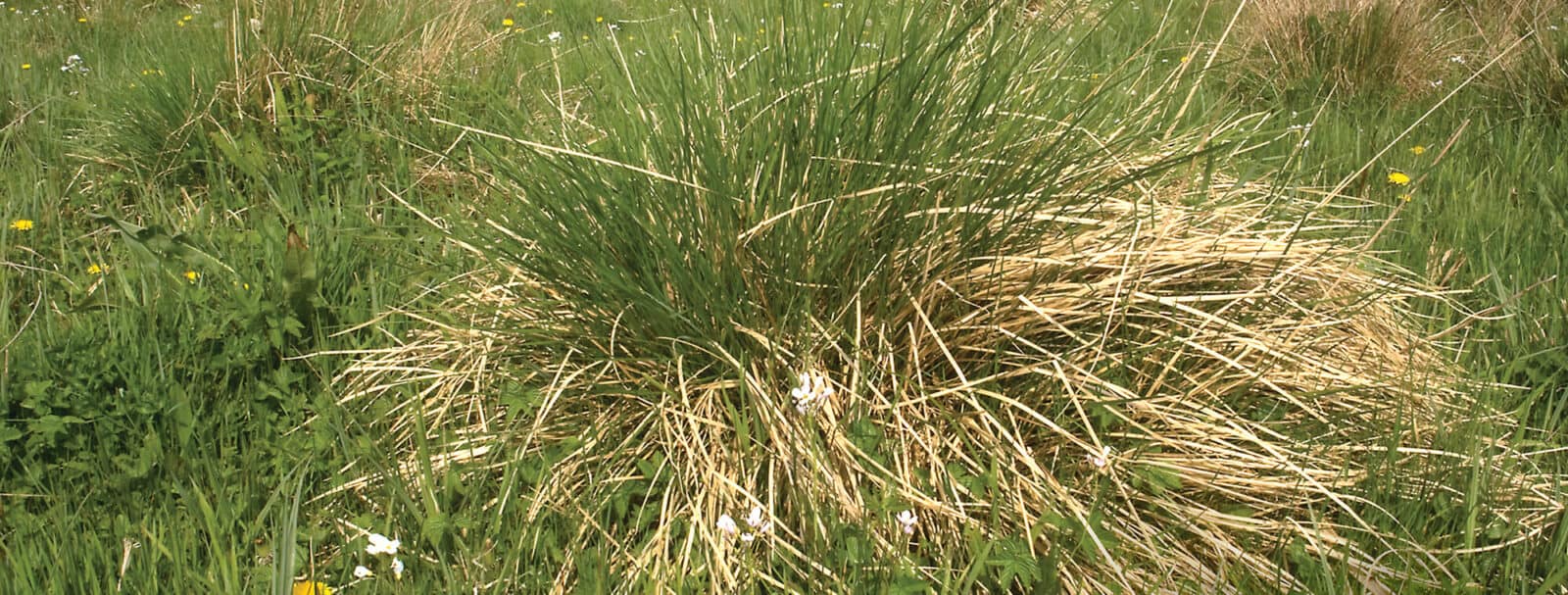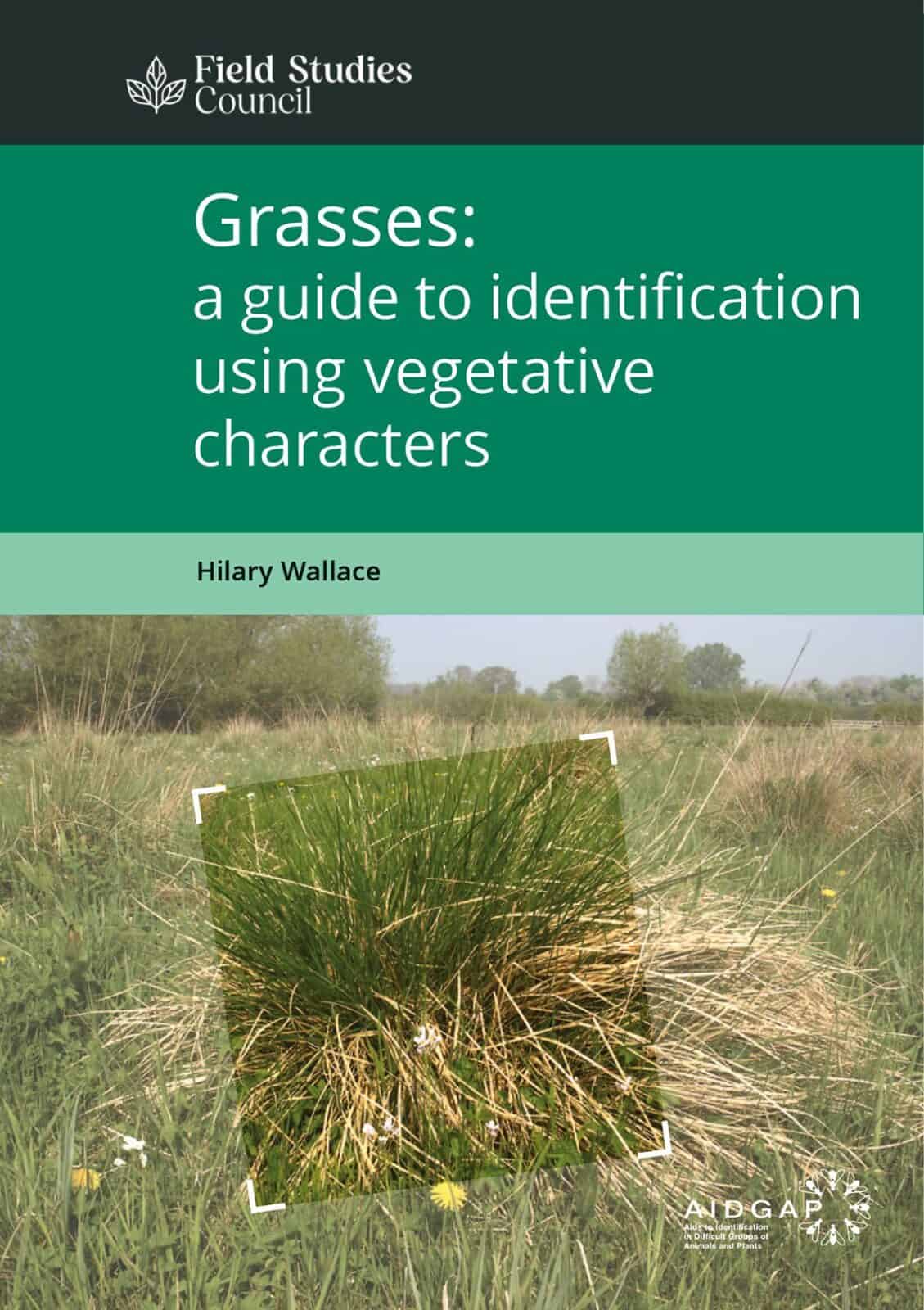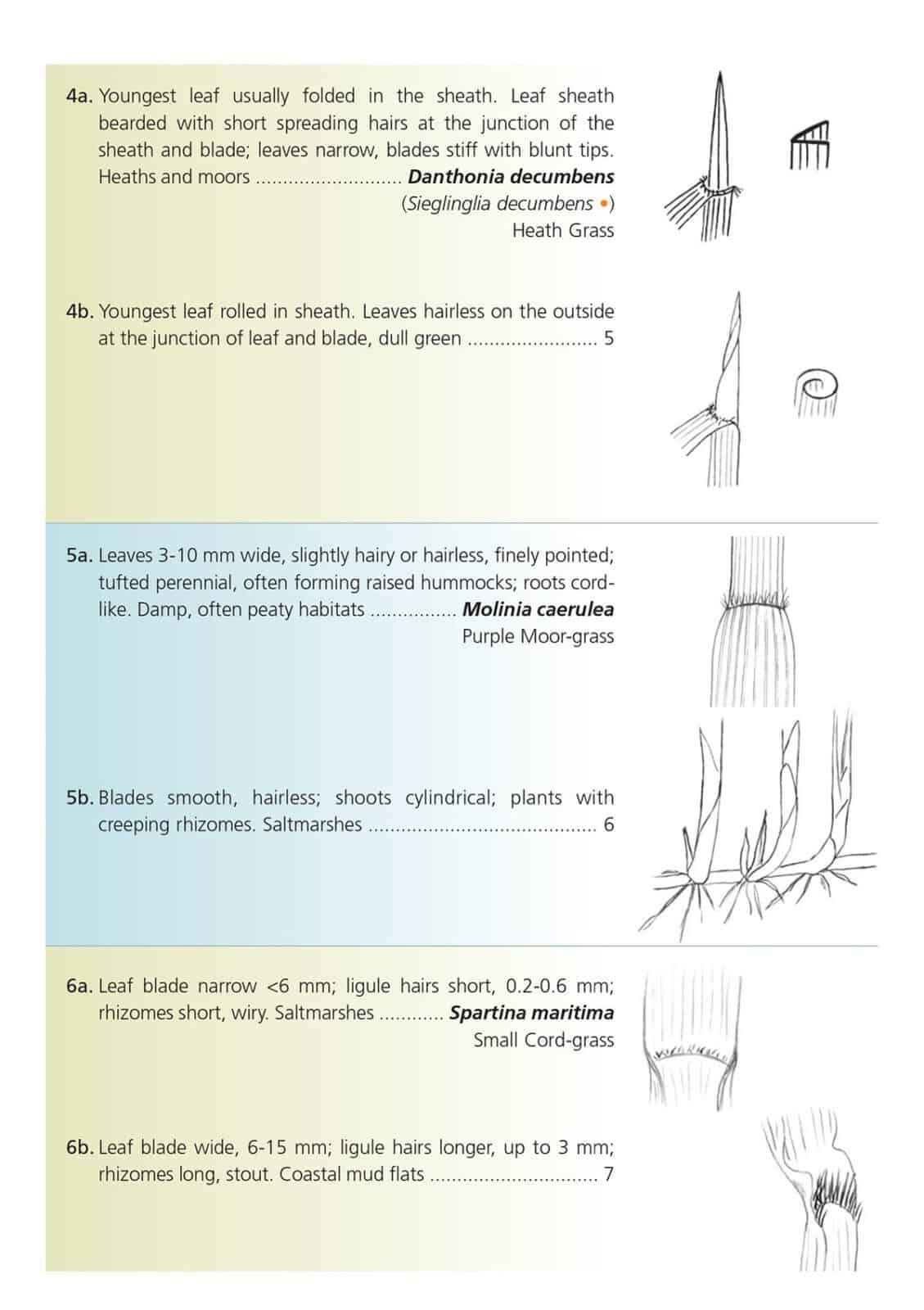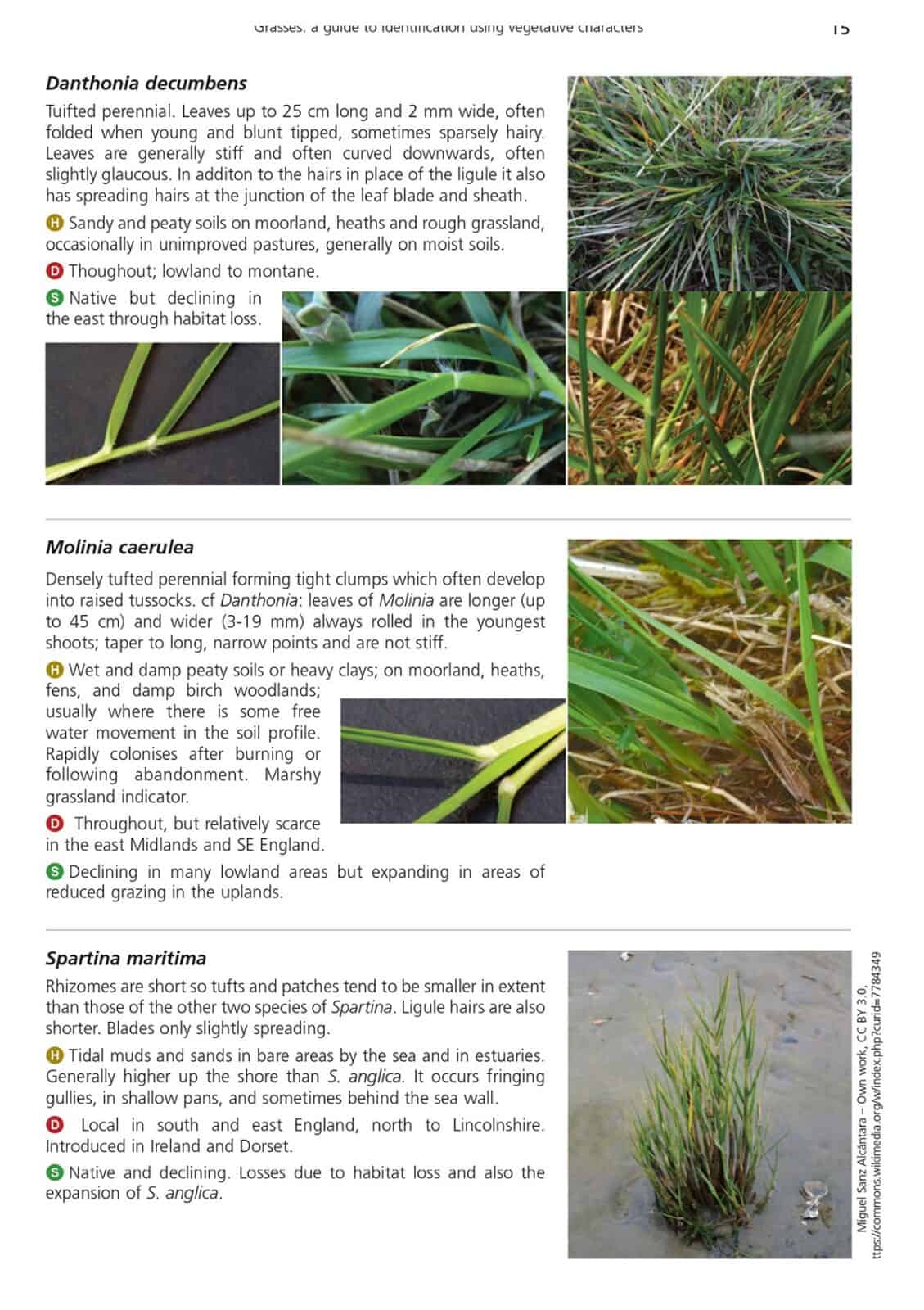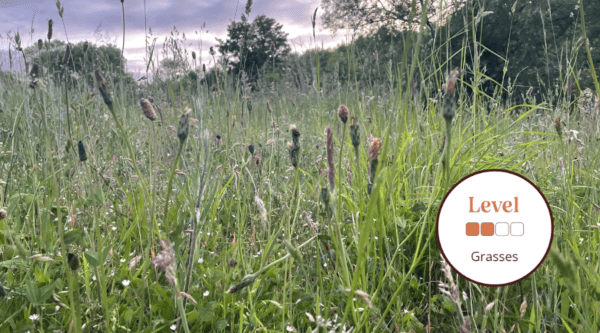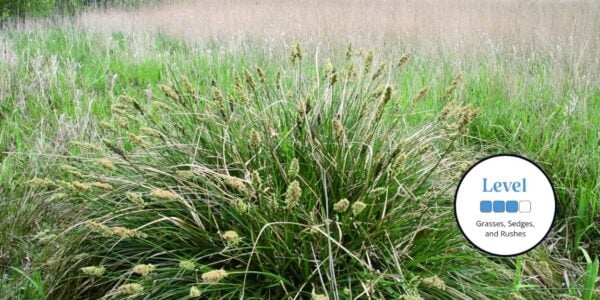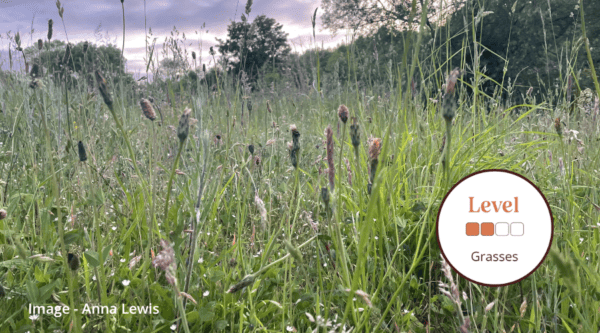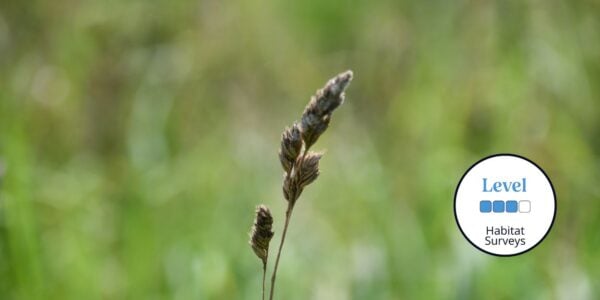Grasses AIDGAP
A guide to identification using vegetative characters
Grasses AIDGAP uses vegetative characters to identify the 90 most common grass species found in the UK.
Grasses form the matrix of a wide range of habitats. They also provide important cover in urban landscapes, including road verges, parklands and playing fields. As a result, grasses are an essential component of most habitat survey protocols. These include Phase I Habitat surveys, National Vegetation Classification (NVC), farm stewardship surveys and Habitat Condition Assessments.
Unfortunately most grass identification keys need flower heads to be present. This is fine in mid summer, but is not always practical in spring, autumn and winter. Potentially this limits habitat surveys to the summer months. But field surveys are needed all year round. Moreover, even in summer, cutting and grazing will remove flower heads. Unfavourable conditions, like competition from more aggressive species or dense shade, can inhibit flowering.
This new vegetative key will help surveyors carry out fieldwork throughout the year. Users do not need expensive or specialist equipment. A hand lens (x10 or x20) and a ruler are enough. The most important characters are leaf form, ligule, auricle, leaf sheath, life cycle and growth form. For ease of use the species accounts are presented next to the diagnostic couplets, rather than as a separate section at the end
This Grasses guide is part of the FSC’s AIDGAP series (Aids to Identification in Difficult Groups of Animals and Plants). Our AIDGAP guides are accessible identification keys, suitable for non-specialists from age 16+. Since 1976 the project has produced over 40 keys to many different groups.

